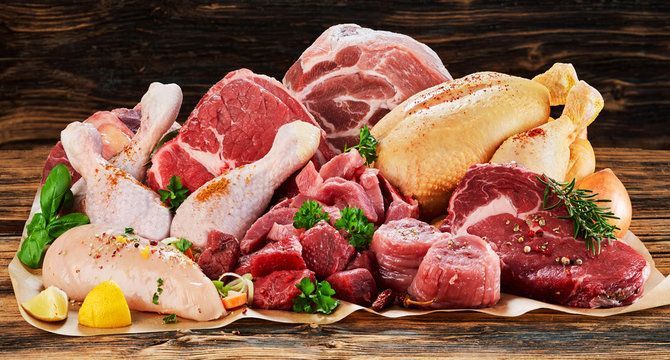How to do a winter bulk
How to Successfully Bulk During Winter: A Complete Guide
Winter is the perfect time to focus on bulking—building muscle and strength—before cutting down for the summer. With colder weather and more layers of clothing, it’s easier to eat in a calorie surplus, prioritize heavy lifting, and make significant gains without worrying as much about aesthetics. However, a successful bulk requires more than just eating more; it demands a strategic approach to avoid excessive fat gain while maximizing muscle development.
Here’s how you can successfully execute a winter bulk.
1. Set Realistic Goals
Before starting your winter bulk, set clear, realistic goals. Determine how much muscle you want to gain and the timeframe for your bulk (typically 3-6 months). It's important to understand that gaining muscle without gaining some fat is nearly impossible. A good target is to aim for 0.5-1 pound of weight gain per week, which will minimize fat accumulation while allowing for optimal muscle growth.
2. Calculate Your Caloric Needs
To bulk, you need to be in a calorie surplus, meaning you consume more calories than your body burns. Here’s how to calculate your caloric intake:
- Step 1: Find your maintenance calories (the amount you need to maintain your current weight). Use a simple online calorie calculator or multiply your body weight (in pounds) by 15.
- Step 2: Add a caloric surplus. For a lean bulk, aim for a 300-500 calorie surplus above your maintenance. This provides the energy needed for muscle growth without excessive fat gain.
Example: If your maintenance is 2,500 calories, aim for 2,800-3,000 calories daily.
3. Focus on Macronutrient Balance
Eating the right types of foods is as important as consuming more calories. Follow these macronutrient guidelines:
- Protein: Protein is essential for muscle repair and growth. Aim for 0.8-1 gram of protein per pound of body weight. Lean meats, fish, eggs, dairy, legumes, and plant-based proteins are excellent options.
- Carbohydrates: Carbs provide the energy needed for intense training. Complex carbs like oats, rice, potatoes, and whole grains should make up 40-60% of your total caloric intake.
- Fats: Healthy fats support hormone production, including testosterone, which plays a key role in muscle growth. Ensure 20-30% of your calories come from healthy fats like avocados, nuts, seeds, and olive oil.
4. Plan Your Training Program
Winter is the time to lift heavy and focus on compound movements that target multiple muscle groups. Here’s what your training program should emphasize:
- Progressive Overload: Gradually increase the weight you're lifting over time to stimulate muscle growth. This is the foundation of strength and size gains.
- Compound Lifts: Focus on exercises like squats, deadlifts, bench presses, overhead presses, and rows. These movements engage more muscles and allow you to lift heavier.
- Low-to-Moderate Volume: Aim for 4-6 sets per exercise with 6-12 reps per set, using heavier weights to promote hypertrophy (muscle growth).
- Train Each Muscle Group Twice a Week: This frequency gives your muscles ample stimulus and recovery time for optimal growth.
5. Incorporate Proper Rest and Recovery
Muscle growth happens outside the gym when you’re resting, not while you’re training. Be sure to:
- Get 7-9 hours of sleep per night to optimize muscle repair, hormone balance, and recovery.
- Rest between sets: For strength-based movements, rest 2-3 minutes between sets; for hypertrophy, 1-2 minutes of rest is sufficient.
- Take rest days: Training too frequently without enough rest can lead to overtraining and hinder muscle growth. Plan at least 1-2 rest days per week.
6. Stay Hydrated
Hydration is often overlooked but critical for optimal performance and recovery. Muscle cells are primarily water, and dehydration can lead to reduced strength and muscle cramping. Aim to drink at least 3-4 liters of water per day, especially around your workouts.
7. Use Supplements Wisely
Supplements can support your bulking efforts but should not replace a proper diet. Consider these basic supplements to enhance your bulk:
- Whey Protein: Convenient for hitting daily protein targets.
- Creatine Monohydrate: Supports strength and muscle gains by increasing ATP production in muscles.
- Branched-Chain Amino Acids (BCAAs): Useful for preserving muscle during intense training sessions.
- Multivitamins: Ensures you're getting essential vitamins and minerals.
8. Track Your Progress
Tracking progress is essential to ensure you're on the right path. Keep track of the following:
- Bodyweight: Weigh yourself once a week, preferably in the morning, to monitor your weight gain. Aim for a slow and steady increase.
- Strength Gains: Keep a log of your lifts and strive to increase the weight lifted or reps performed each week.
- Body Composition: Take progress photos or measurements every month to assess muscle growth versus fat gain. Adjust your calorie intake or training program if needed.
9. Don’t Forget Cardio
While bulking, it’s easy to neglect cardio, but some level of cardiovascular training is important for overall health and recovery. Incorporate 1-2 sessions of low-to-moderate intensity cardio per week (20-30 minutes) to maintain heart health without interfering with your bulking goals.
10. Be Patient and Stay Consistent
A successful bulk doesn’t happen overnight. It takes months of consistent effort, training, and eating. Stay patient and trust the process, knowing that you're laying the foundation for future muscle growth and strength.
Conclusion
A winter bulk is an ideal opportunity to pack on serious muscle mass and strength while preparing your body for the cutting phase later in the year. By focusing on a strategic calorie surplus, balanced macronutrient intake, heavy compound lifts, and proper recovery, you’ll maximize your gains and minimize fat accumulation. Stay committed to the process, and when summer comes around, you’ll be ready to reveal a leaner, stronger physique.











